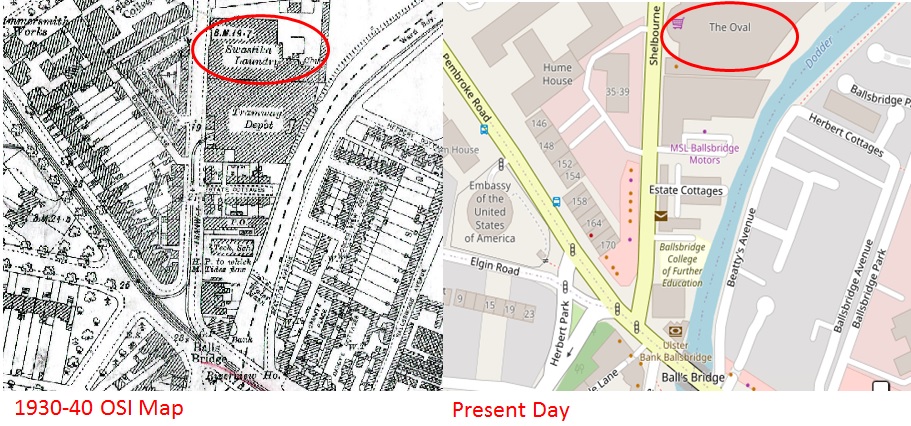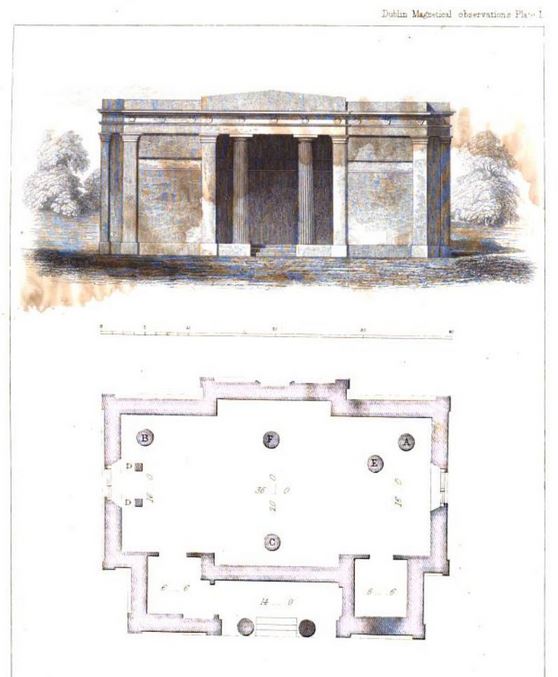Éire Go Bragh Statue, College Green –This easily overlooked statue is one of my favourites in Dublin, not only for its aesthetics, but for the spirit in which it was erected. The statue is the work of Edmund Sharp & Joseph Pearse, father of Patrick & William Pearse, both of..~1 







whom were executed for their role in the 1916 Rising. Erected in 1889, the sculpture depicts Éireann, sitting holding a harp, with an Irish wolfhound to her right & items of trade, symbolising commerce to her left.
While being an exquisite example of Celtic Revival art, its..~2
While being an exquisite example of Celtic Revival art, its..~2

position in the city was also a statement of intent. Opposite the statue sits what once was the Irish Parliament. After the 1801 Act of Union which abolished Irish Parliament, the building was purchased & used by Bank of Ireland. Irelands subservience to the British Crown was..~3 



further highlighted by the carving of the Royal coat of Arms above the main entrance.
However, in 1845, Daniel O’Connell set up The National Bank at 34 College Green, as a way to help Irish Catholics, its location almost a challenge to British Rule. Its nationalist pedigree...~4
However, in 1845, Daniel O’Connell set up The National Bank at 34 College Green, as a way to help Irish Catholics, its location almost a challenge to British Rule. Its nationalist pedigree...~4

was further highlighted when the current statue was placed above it in 1889, at a time when the Home Rule movement was growing.
The phrase Éire/Érin Go Bragh (Ireland Forever) 1st came to prominence through the United Ireland organization in the 1790s & has been used by..~5

The phrase Éire/Érin Go Bragh (Ireland Forever) 1st came to prominence through the United Ireland organization in the 1790s & has been used by..~5


Irish Nationalists throughout the world. John Reily & his “Batallón de San Patricio” who fought for Mexico against the US during the Mexican–American War (1846–48) are said to have used a flag with the motto.
In the 1906 Olympics in Athens, Peter O Conner won silver in the...~6



In the 1906 Olympics in Athens, Peter O Conner won silver in the...~6




long jump for Ireland. At the flag raising ceremony, when the Union flag was being raised, O Conner scaled the flag pole, ripped down the Union flag & replaced it with an Irish flag bearing the Érin Go Bragh motto (the Tricolour was not widely used by this time). Other Irish...~7 



& Irish-American athletes defended the flag as it flew – the 1st instance of an Irish flag being flown at the Olympics.
Next time you're in College Green, take a moment & cast your eyes up to the statue, as she forever stares across at the Royal Coat of Arms in defiance.
~End
Next time you're in College Green, take a moment & cast your eyes up to the statue, as she forever stares across at the Royal Coat of Arms in defiance.
~End
#DiscoverDublin @PhotosOfDublin @OldDublinTown @OldeEire @irelandbattles @legacy_irish @heritage_dublin @DubHistorians @MilHistSocIre @Stairnahireann @IrishHistoryPod @theirishstory @IrishCentral @archiseek @chtmdublin @pearsemuseumopw
• • •
Missing some Tweet in this thread? You can try to
force a refresh





















































